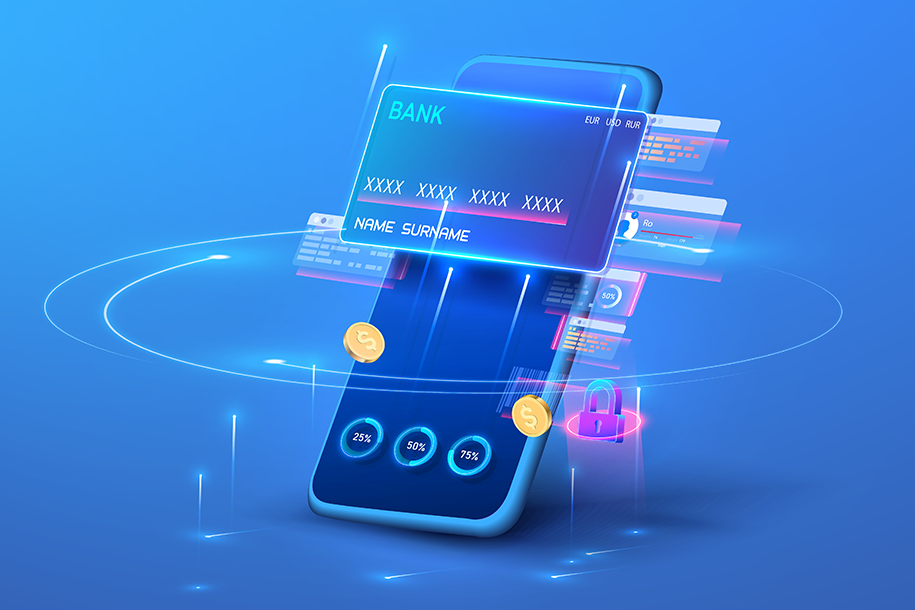Financial institutions have frequently relied on traditional perimeter-based security models, assuming that threats mainly lie “outside” the firewall. While this approach worked in a more static environment, today’s banks operate in a hyper-connected, fast-evolving threat landscape. Remote work, cloud services, mobile apps, and myriad third-party integrations blur the lines between “inside” and “outside,” making the old perimeter-based defense insufficient. Enter Zero Trust-a framework built on the premise that organizations should never automatically trust anything inside or outside their network but must continually validate every user, device, and connection.
What is Zero Trust Security?
Zero Trust security is a strategic approach that shifts the focus from trusting internal networks to verifying every user, device, or application trying to access a system. Rather than relying on a single, overarching perimeter, Zero Trust takes a micro-segmentation approach, effectively treating each asset, device, and application as if it stands in its own perimeter. This means you don’t automatically give people broad access simply because they’re within the corporate network.
In a Zero Trust environment, user authentication is dynamic and continuous. Requests for resources are checked against a set of policies at every step—does the user have the right authorization level? Is the user logging in from a risky location? Is their device compromised or outdated? Only once these checks are satisfied is access granted. If anything is amiss, access is blocked, or a higher level of authentication may be required.

What Are the Main Principles Behind Zero Trust?
While different organizations or vendors may express the Zero Trust philosophy in various ways, some common principles guide this model:
Never Trust, Always Verify
The foundational motto of Zero Trust is that no user, device, or network element is inherently trustworthy. Every attempt to access a resource demands careful and thorough authentication and authorization, regardless of whether the request originates from within the company’s network or externally.
Micro-Segmentation
Instead of a single broad defensive wall, assets are segmented into smaller zones. Each zone or micro-perimeter has its own stringent access rules. If attackers break into one zone, they cannot easily move laterally and access other sensitive areas.
Least Privilege
The principle of least privilege ensures users and devices only have access to the minimal set of resources necessary to perform their tasks. This reduces the chance that a compromised account can wreak widespread havoc.
Continuous Monitoring and Validation
A Zero Trust architecture requires continuous monitoring to detect anomalies. If a user’s behavior deviates from normal patterns, or if a device exhibits signs of compromise, access privileges may be adjusted in real time. This dynamic approach goes beyond static usernames and password checks.
Secure Access Controls
Strong authentication methods, such as multi-factor authentication (MFA) and identity federation, ensure that even if login credentials are stolen, the attacker will face additional barriers.
Automation and Orchestration
Given the complexity of modern networks, Zero Trust often relies on automation to enforce security policies consistently. This includes automated threat detection, incident response, and policy updates, which reduce manual overhead and speed up reaction times.
What Are Some Zero Trust Use Cases?
Zero Trust is versatile and can be applied across different sectors, though it resonates especially in industries that store and process sensitive data. Here are a few common use cases:
Remote Work
With employees connecting from various locations and devices, a Zero Trust model prevents the common pitfall of granting broad network access. Instead, workers must pass rigorous security checks, ensuring only approved devices and authenticated users can connect to corporate resources.
Cloud Migration
As organizations move to the cloud, the traditional on-premises security perimeter dissolves. Zero Trust ensures that each cloud resource—be it a server instance or a database—is individually protected behind policy-driven access controls.
Third-Party Vendor Integration
Supply chain attacks highlight the risks of trusting external vendors by default. Zero Trust imposes strict verification rules for third-party users or APIs, restricting them to only the necessary data and services.
Microservices Architecture
For modern apps built using microservices, Zero Trust can help ensure that services only communicate with approved endpoints. Traffic between each service is authenticated and encrypted, minimizing lateral movement if a breach occurs.

Zero Trust in Banking: A Strategic Approach to Secure Banking
Banks are prime targets for cybercriminals due to the sensitive nature of financial data and the potential for substantial monetary gain. As mobile banking, digital wallets, and contactless payments gain ground, the banking perimeter continually expands, increasing the need for a more robust and adaptive security stance. Here’s how Zero Trust translates to the financial realm:
Multi-Layered Protection
Instead of a singular protective layer for the entire network, banks can implement micro-segmentation for critical systems—like payment gateways, transaction databases, and customer support portals. An attacker gaining access to one system doesn’t automatically grant them free rein over everything else.
Dynamic Fraud Prevention
With Zero Trust, every user action—transferring funds, updating account settings, accessing sensitive customer information—is checked in real-time. Machine learning can further analyze behavioral patterns, flagging unusual transactions or login behaviors for immediate investigation.
Regulatory Compliance
Financial institutions operate under stringent regulations such as PCI DSS, GDPR, and various local banking mandates. Zero Trust frameworks, with their continuous monitoring, clear audit trails, and strict access controls, help banks better demonstrate compliance. Every login attempt, configuration change, or resource request is logged and verifiable.
Least Privilege for Employees and Contractors
Limiting users to the minimum necessary privileges is particularly critical in banking, where a single compromised account can lead to extensive financial damage. With Zero Trust, teller systems, underwriting platforms, and executive dashboards all reside in separate zones, ensuring employees only see relevant data.
Enhanced Customer Trust
In an era when news of a single data breach can shatter a financial institution’s reputation, adopting Zero Trust can serve as a competitive advantage. Customers and stakeholders want assurances that their sensitive financial data is protected by the latest in security best practices. A robust Zero Trust framework helps convey that confidence.
Adaptability in the Face of Emerging Threats
Cybercriminals evolve quickly. Banks deploying Zero Trust can adjust security policies on the fly, blocking new threat vectors or restricting privileges if unusual behavior is detected. This agility is crucial in a sector where even a brief downtime or breach can be devastating.
Zero Trust represents a paradigm shift in cybersecurity-one particularly well-suited to banking’s high stakes and complex environments. By assuming that all users, devices, and network segments are equally untrusted until proven otherwise, Zero Trust grants financial institutions the tools to reduce attack surfaces, protect customer data, and respond swiftly to emerging threats. As regulations tighten and banking services continue to digitize, adopting a Zero Trust framework isn’t just a defensive measure, but a strategic investment in security, compliance, and customer trust.



